Among the wealth of perennials available to the gardener today, few match the drama of globe thistles. They are known for their true-blue, spherical inflorescences, each of which starts life as small grey-green mace-like globe, before individual blue flowers open from the top of the sphere down. Echinops are at their best planted en masse, creating veritable oceans of suspended blue spheres bobbing gracefully in the breeze. Bees and other pollinators are equally enticed by globe thistles, with the compound inflorescences among the most abundant and frequently replenished sources of nectar available. Unoccupied globes are therefore a rare sight on a summer’s day, ensuring borders hum approvingly.
Few perennials can compete with globe thistles for drought tolerance. Once established, they require no additional watering – even in sweltering droughts as other perennials wilt and wither away. Globe thistles combine this drought tolerance with complete hardiness, continuing to grow well in cold, wet conditions and surviving unscathed in even the coldest of UK winters before emerging anew each spring.
What are Echinops?
Commonly known as globe thistles, Echinops is a genus of around 218 species of annuals, biennials, and herbaceous perennials. Only a small proportion of globe thistle species have reached gardens in the UK – the majority are cultivars of Echinops bannaticus and Echinops ritro. Species originate from across Europe, Africa and Asia. Of the cultivars grown in the UK, most originate from cooler regions of Europe.
Jump to
- Where to plant Echinops
- When to plant
- How to propagate
- When to cut back
- Echinops pests and hardiness
- Where to buy and see
- The best Echinops to grow
How to grow Echinops
Where to plant Echinops
Echinops are low-maintenance and drought-tolerant perennials. Planting them in medium to free-draining poor soil in full sun will often create the best flowering display. A neutral soil is favourable, though many find success in alkaline soils. When planting, simply dig a suitably sized hole, and ensure the plant is firmed in well. Most globe thistle cultivars can be expected to live for five to ten years, and established plants do not require additional watering.

A classic position is in dry gardens and what I would term ‘scrubland’ gardens. In a sparse setting against a backdrop of shrubs such as buddlejas and brooms, globe thistles can be used to great effect as structural punctuation throughout the planting scheme. In spring, their finely cut foliage provides a pleasing foil to architectural sea hollies, euphorbias and sedums, before taking centre stage in summer, flooding the garden with blue.
As vigorous clump-forming perennials, Echinops will make excellent additions to any perennial border – even in tightly packed cottage gardens, where they sit gracefully alongside delphiniums, hollyhocks and foxgloves. For the cottage gardener, the globes of Echinops are also wonderful as cut flowers.
When to cut back Echinops
Cut back Echinops in autumn or leave until spring. In sheltered gardens, dry Echinops seedheads can be striking and sculptural, particularly when touched with frost. Globe thistles are fully herbaceous, dying back each year. In spring, fresh growth emerges from the ground, at which point you should remove the previous year’s stems. Deadheading in summer can help to ensure a second flush of flowers in autumn and limits self-seeding.
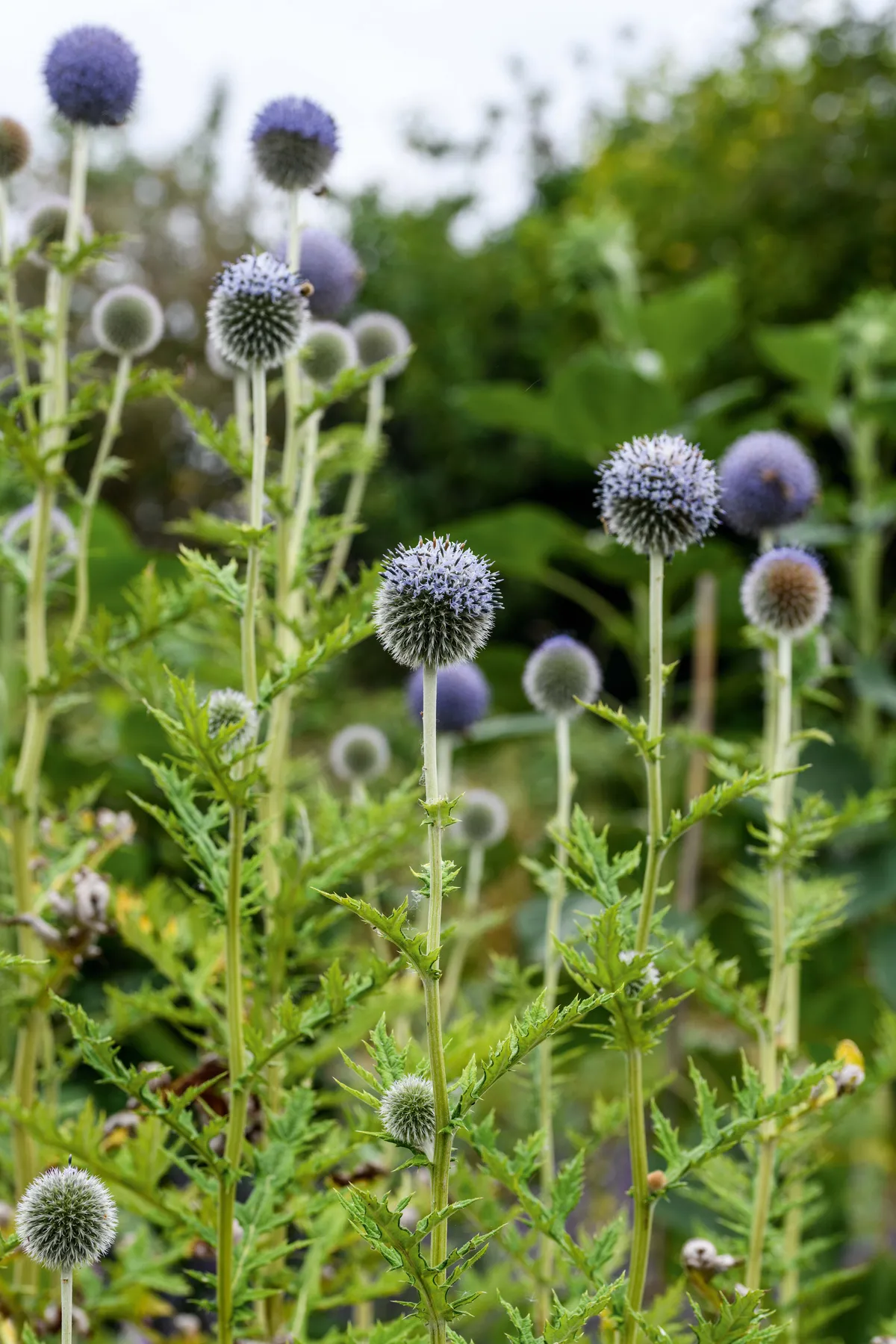
When to plant Echinops
Echinops are best planted in autumn. Newly planted globe thistles prioritise root growth over top growth. Give autumn-planted Echinops a deep watering at planting and they will be fully drought tolerant by the following spring. Spring-planted specimens require a deep watering every week during their first year, with little reward for this effort until the subsequent year.
Plant Echinops when young. When you see potted globe thistles in garden centres and nurseries, they can often appear small or unkempt. This is because the growth of their deep taproots is inhibited by cultivation in pots. So, unlike other perennials, which can benefit from growing on in larger pots, globe thistles should be planted out as soon as possible.
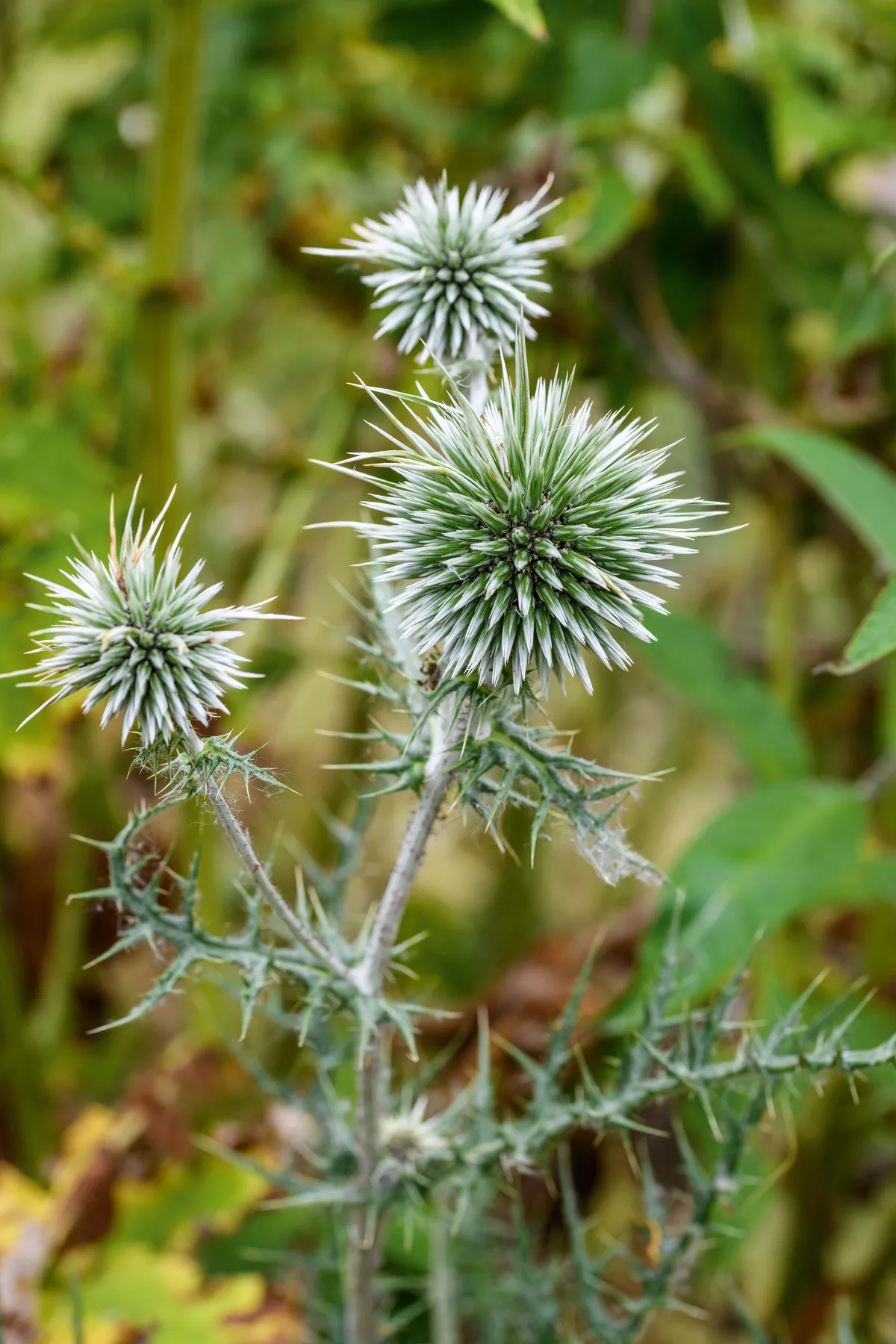
How to propagate Echinops
Propagate Echinops by seed. Seed, which is produced in abundance, can be collected in autumn and sown fresh or the following spring on to moist seed compost before covering with grit or vermiculite. Germination should take two to four weeks depending on temperature, and once seedlings have produced the first two pairs of true leaves, you can pot on and then plant out as soon as well rooted. Divide established globe thistles by digging out a large rooted section in spring or autumn and plant where desired.
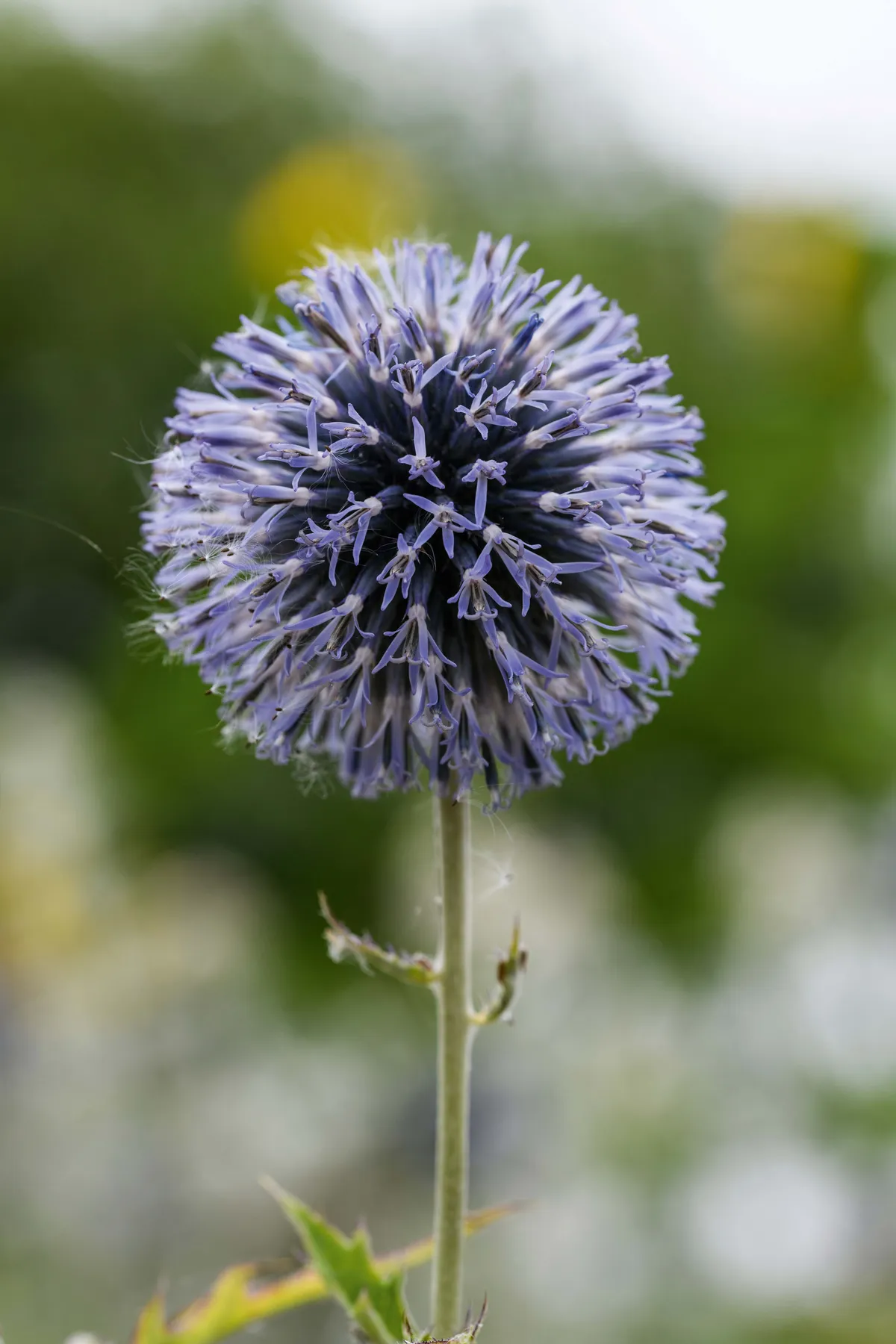
How big do Echinops grow?
Height and spread varies between species and cultivars. Echinops ritro cultivars typically reach a maximum height of 1m with a spread of 50-70cm. Echinops bannaticus cultivars can reach 1.5-2m tall with a spread of 70cm-1m. Richer soils produce wider and bushier plants while in poorer soils plants are more compact and upright.
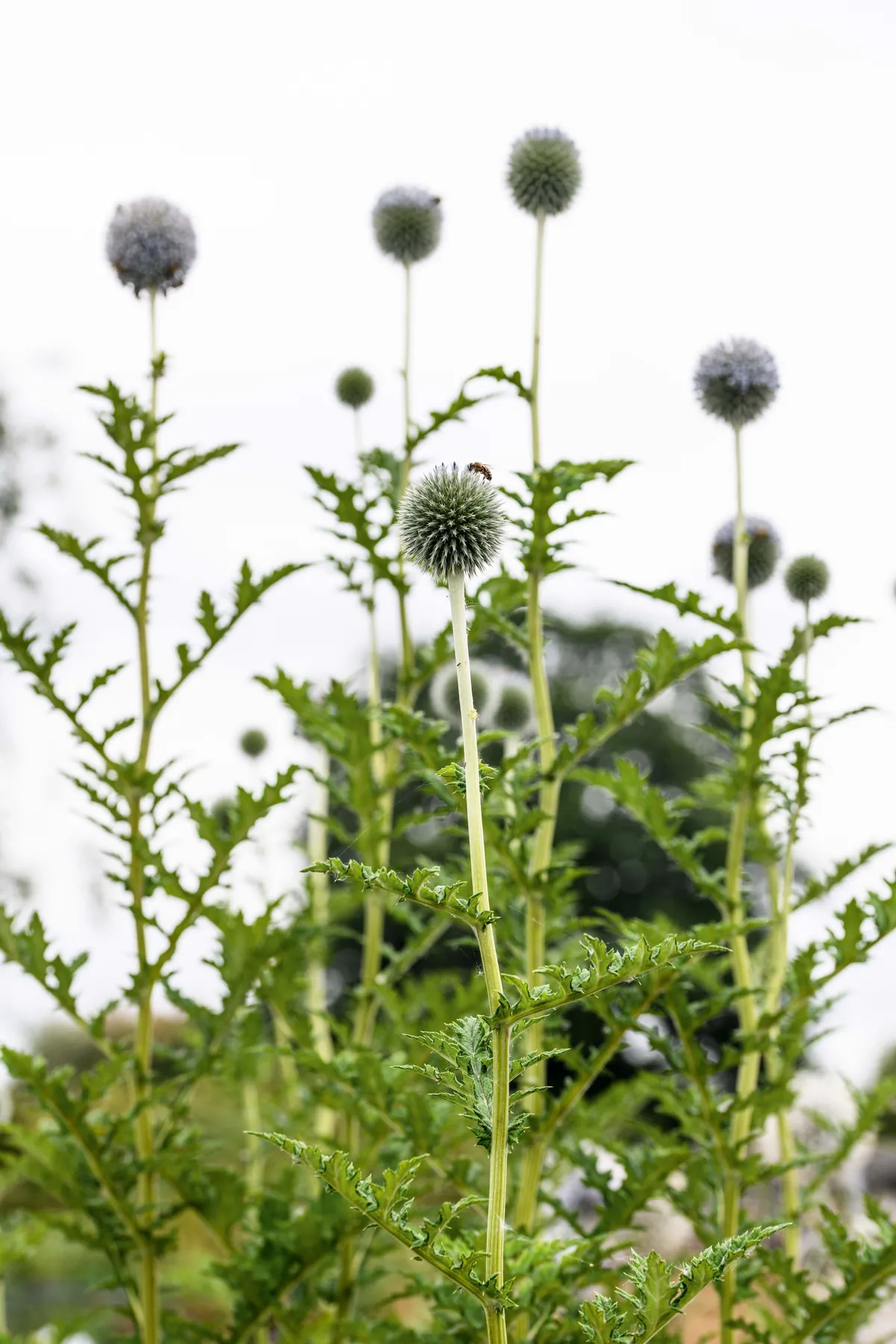
When do Echinops flower?
Flowers emerge first in midsummer, often re-flowering in autumn. The attractive jagged foliage appears from spring to midsummer.
Echinops pests and hardiness
Echinops are generally pest and disease free. Aphids are the primary pest, with infestations likely in spring to early summer. Leaf distortion is common in infested plants; however, intervention is rarely required. In damp conditions, globe thistles in tightly packed borders may develop mildew; this, too, is rarely problematic. Globe thistles are incredibly resilient perennials and invariably grow away from any pest or disease damage.
Hardiness varies depending on species but the species and cultivars featured here are fully hardy across the UK with an RHS hardiness rating of H6-H7, and suitable for gardens in USDA zones 3a to 10b.
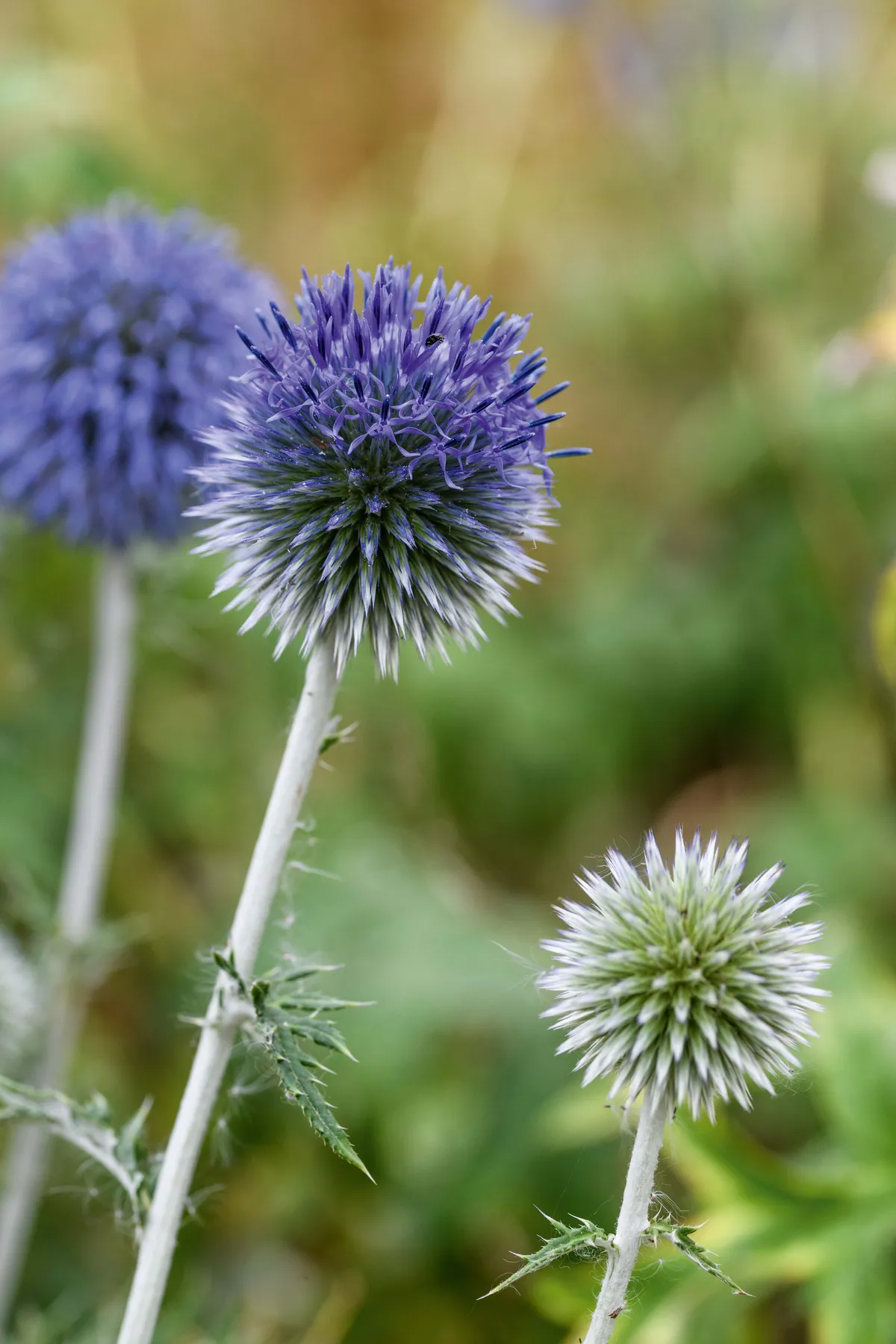
Where to buy and see Echinops
• Beth Chatto’s Plants & Gardens Clacton Road, Elmstead Market, Elmstead, Colchester, Essex C07 7DB. Tel 01206 822007, bethchatto.co.uk
• Burncoose Nurseries Gwennap, Redruth, Cornwall TR16 6BJ. Tel 01209 860316, burncoose.co.uk
• Cambridge Botanic Gardens 1 Brookside, Cambridge CB2 1JE.Tel 01223 3362654, botanic.cam.ac.uk
• RHS Garden Wisley Woking, Surrey GU23 6QB. Tel 01483 224234, rhs.org.uk
The best Echinops to grow
Echinops ritro ‘Veitch’s Blue’
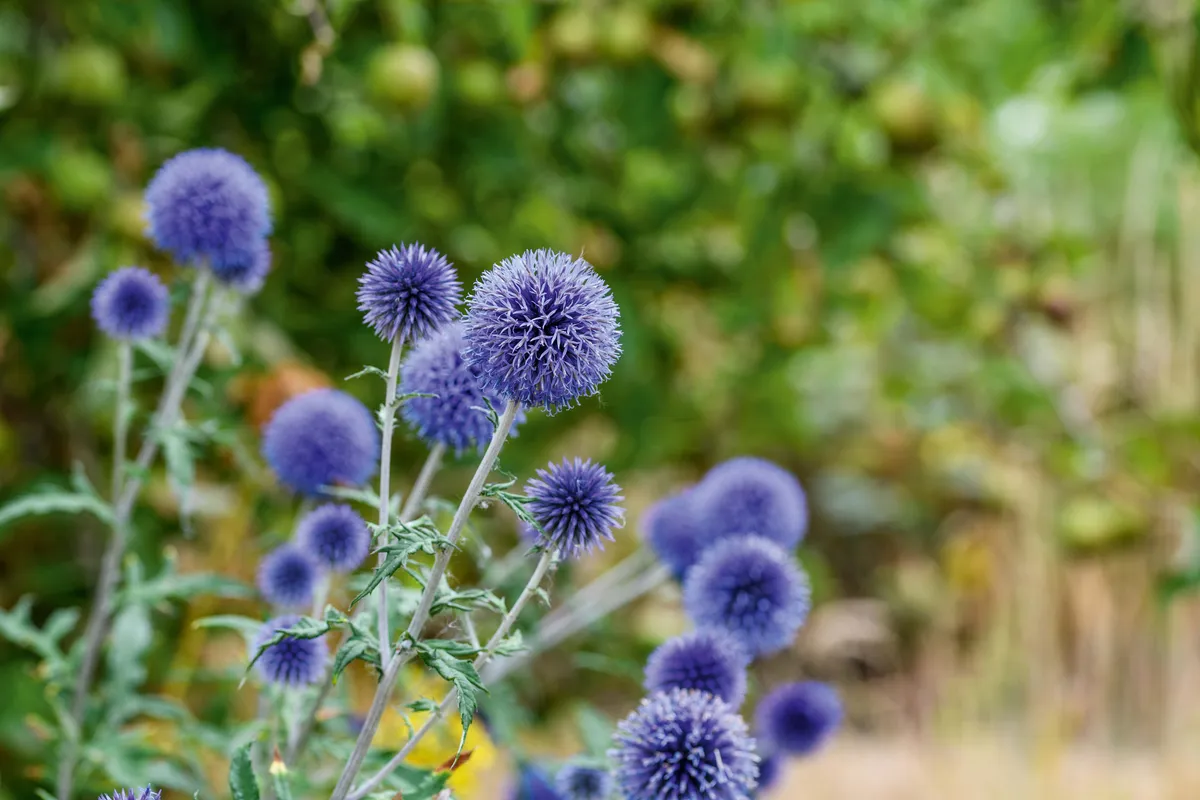
Perennial cultivar with steel-blue flowers from midsummer, often re-flowering in autumn. A perfect choice for the middle of a border in clumps or in drifts. It is among the UK’s most widely grown globe thistles, with good reason. 90cm. RHS H7, USDA 3a-8b†.
Echinops sphaerocephalus
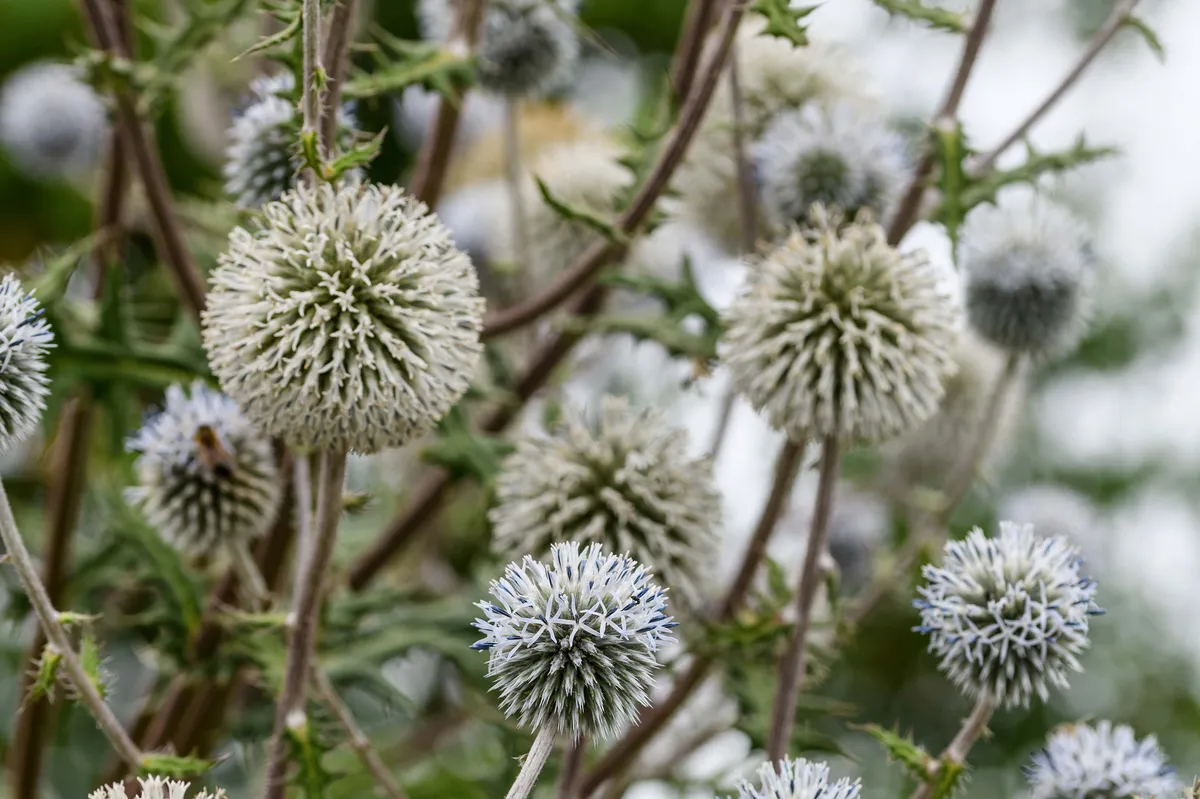
A widespread Eurasian species that is among the tallest and most dramatic globe thistles available in the UK. It is most recognisable for its highly branched, maroon stems, each tipped with white globes. Sets seed abundantly. 2.5m. RHS H7, USDA 3a-9b.
Echinops exaltatus
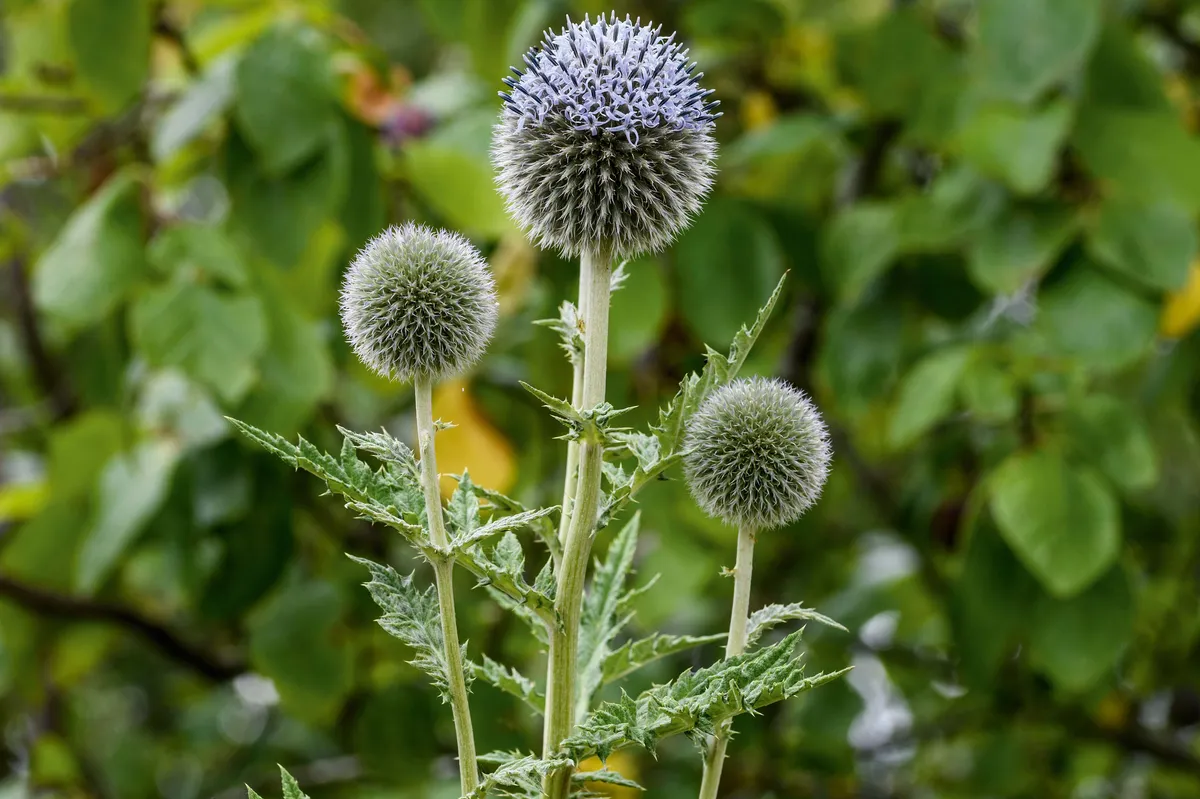
The tallest perennial globe thistle available in the UK. A robust but easily managed species from central and eastern Europe. Produces tennis ball-sized, white to pale powder-blue inflorescences. Rarely available. 2.5m.. RHS H7, USDA 3a-9b.
Echinops bannaticus ‘Blue Globe’

The most widely available Echinops bannaticus cultivar is a good perennial example of the classic blue globe thistle, flowering in midsummer and autumn. Sometimes sold as Echinops bannaticus ‘Blue Glow’. 1.5-2m. RHS H7, USDA 3a-8b.
Echinops bannaticus ‘Star Frost’
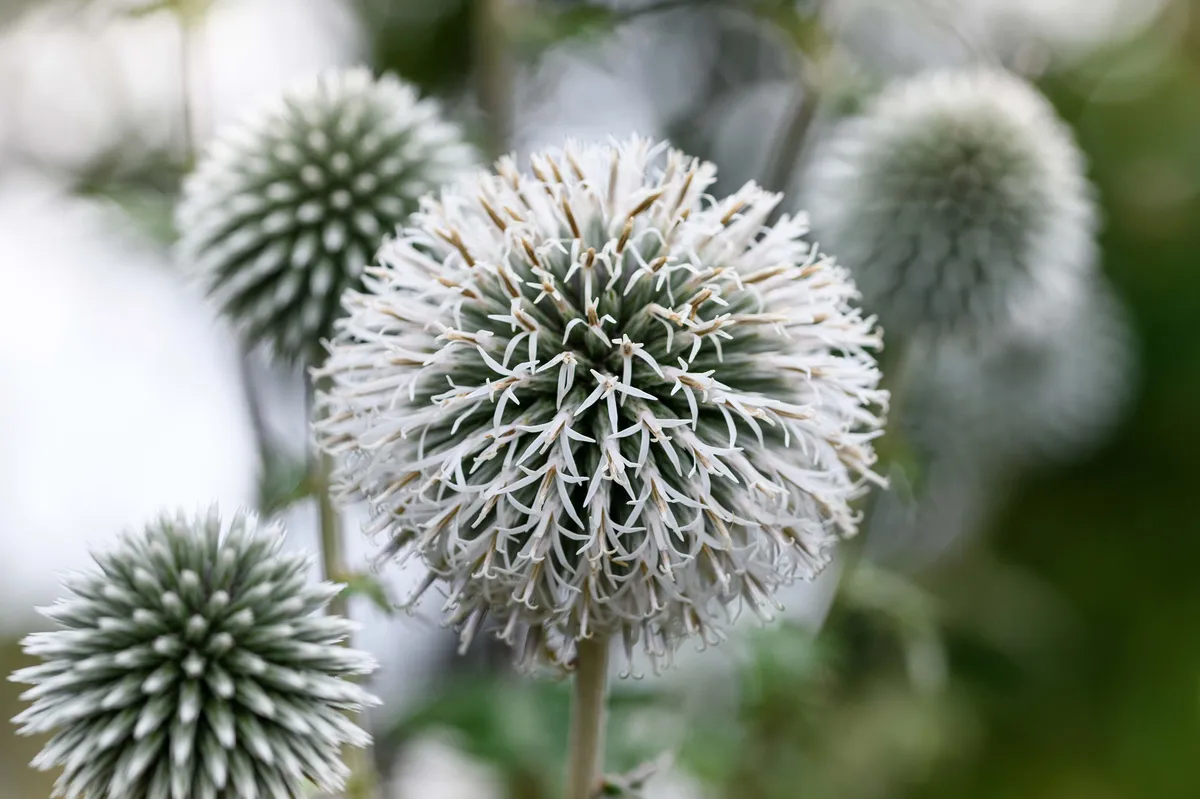
A white-flowered cultivar flowering in summer and autumn. Inflorescences similar in appearance to Echinops sphaerocephalus but with green-brown stems and benefiting from a perennial habit. 1.2-1.5m. USDA 3a-8b.
Echinops bannaticus
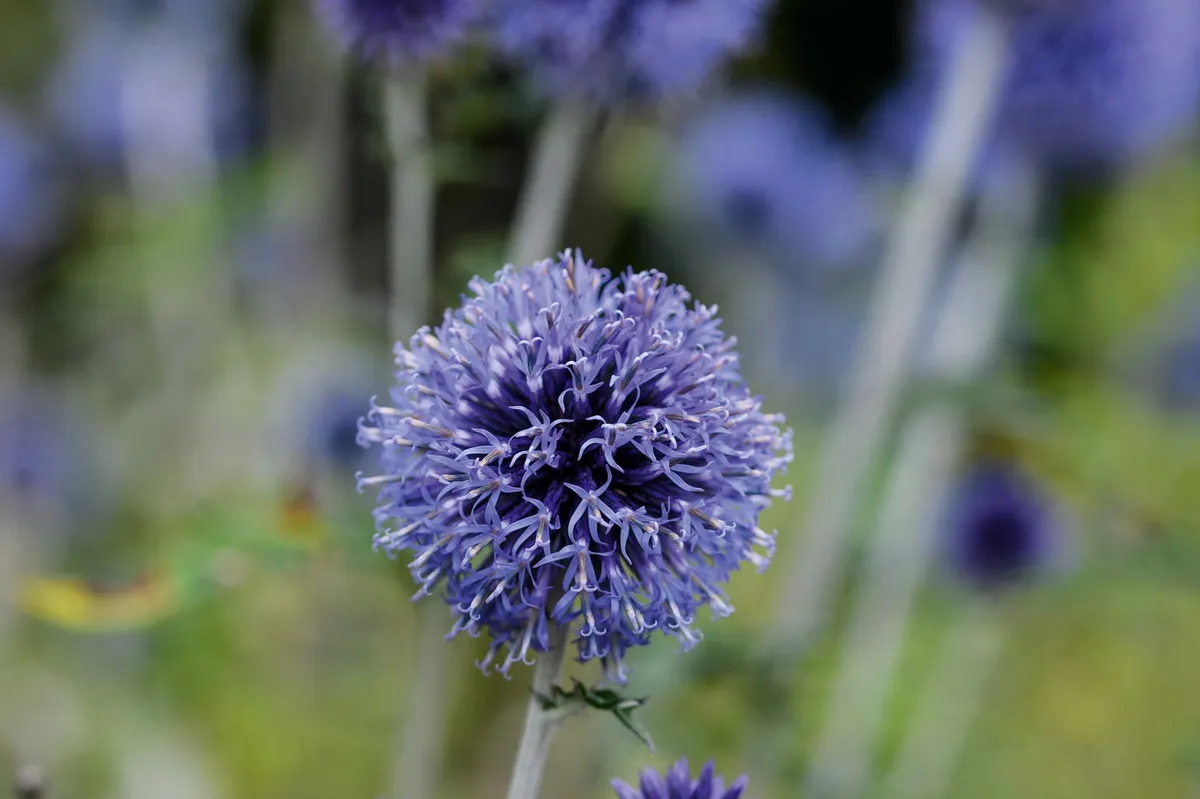
Native to southeast Europe, this is among the most cultivated of species grown in the UK. The straight species has silver-green leaves and flowers that range in colour from deep powder-blue to white. 1.2-2m. RHS H7.
Echinops sphaerocephalus ‘Arctic Glow’
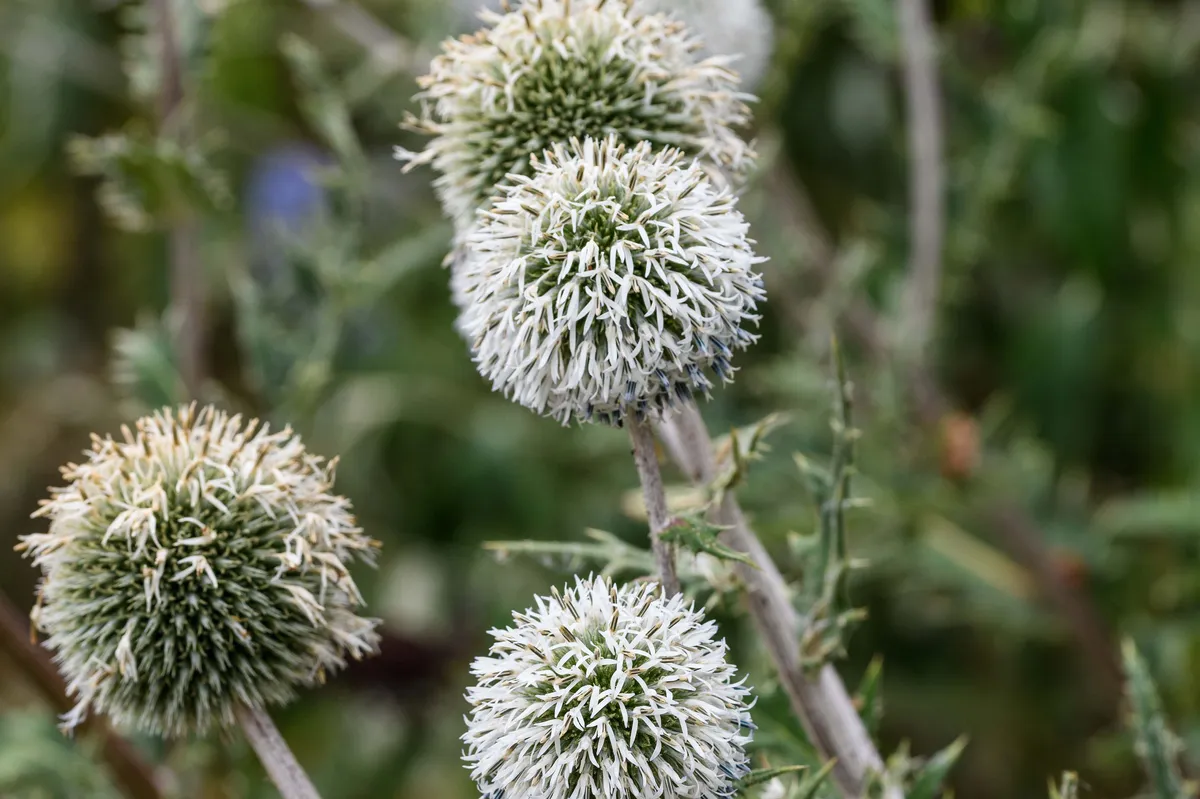
A shorter and more manageable cultivar of Echinops sphaerocephalus. It’s a short-lived perennial that produces an abundance of above-average sized, white globes in midsummer and autumn. 1m. RHS H7, USDA 3a-10b.
Echinops ritro ‘Baby Globes’
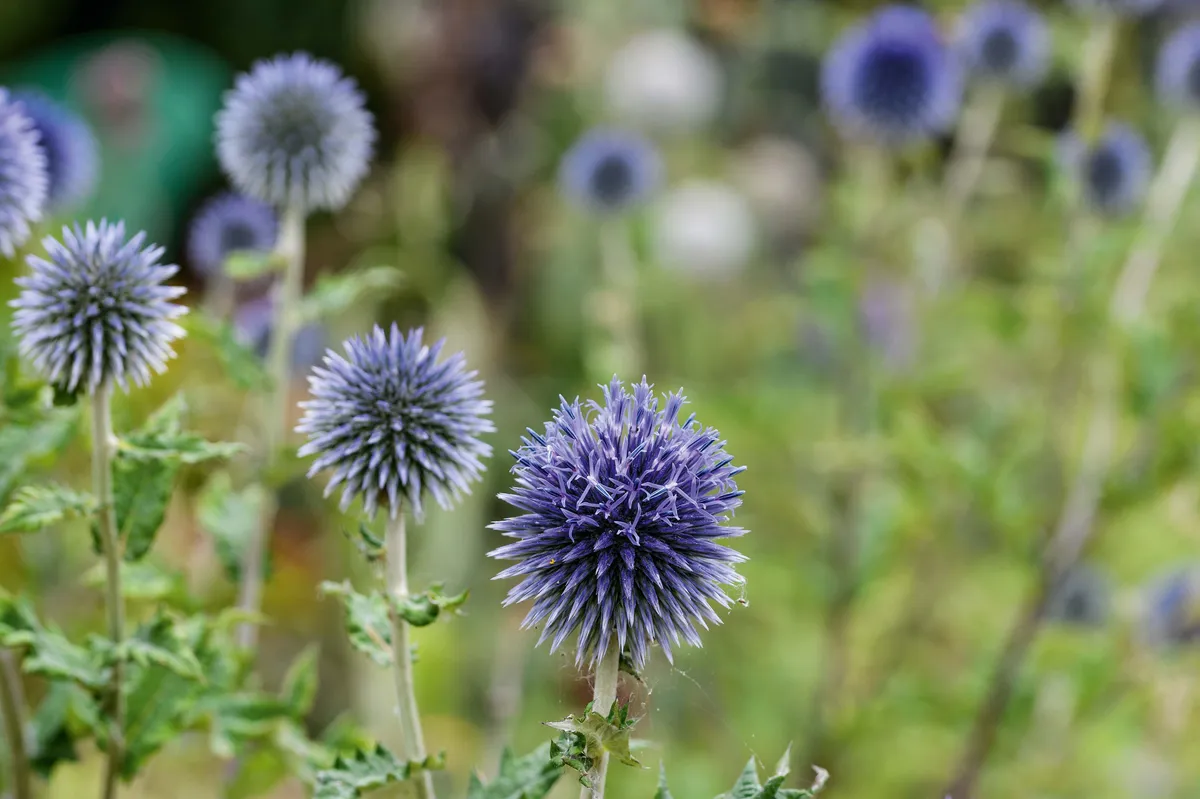
A relatively new cultivar of Echinops ritro, flowering from midsummer to autumn. Its flowers are marginally smaller and their colour paler than the steely blue of most Echinops ritro cultivars. 80cm. RHS H7, USDA 3a-8b.
Echinops ritro subsp. ruthenicus ‘Platinum Blue’
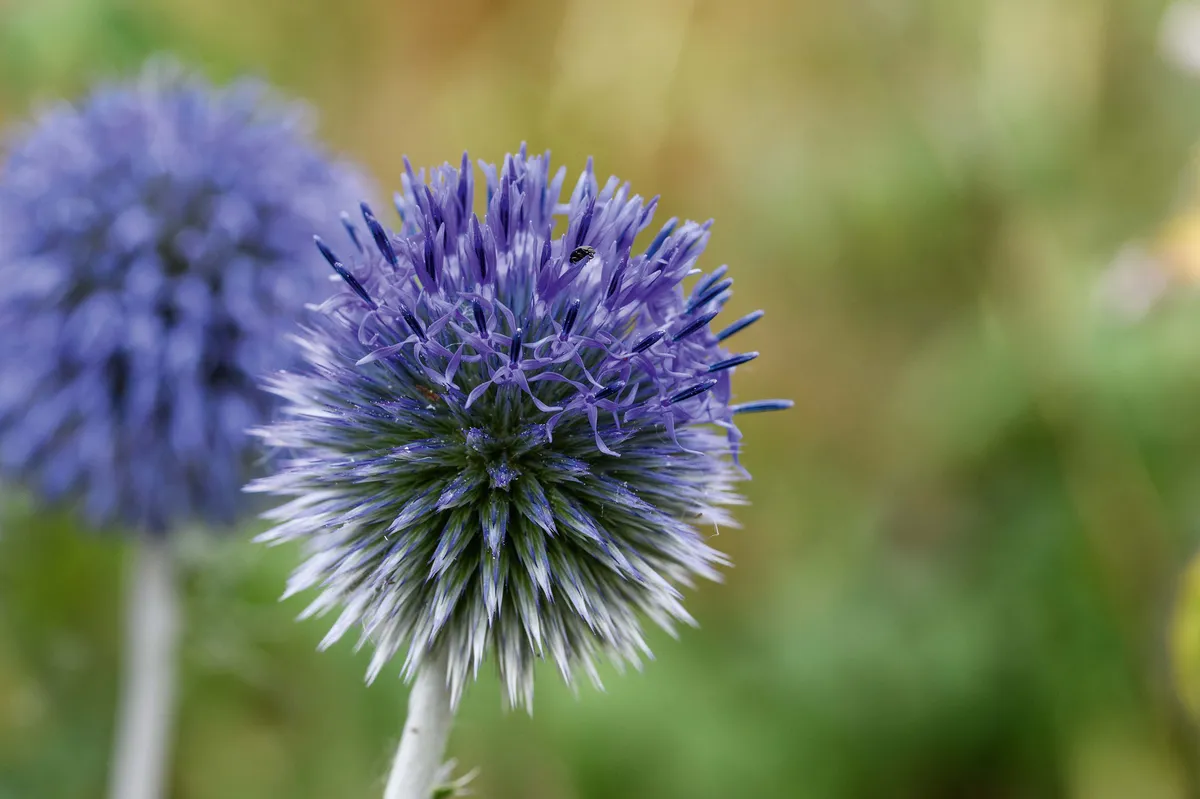
Its finely cut foliage gives rise to powder-blue inflorescences from midsummer to autumn. Requires a well-drained sunny position to thrive. Tricky to establish but worth persevering with. 60cm. USDA 4a-8b.
Echinops tjanschanicus

A refined perennial species with broad-leaved, thistle-like foliage and white to pale-blue flowers on starkly upright stems. Before flowering, attractive pale-green inflorescences extend the season. 1.5-2m. RHS H6.
Echinops spinosissimus
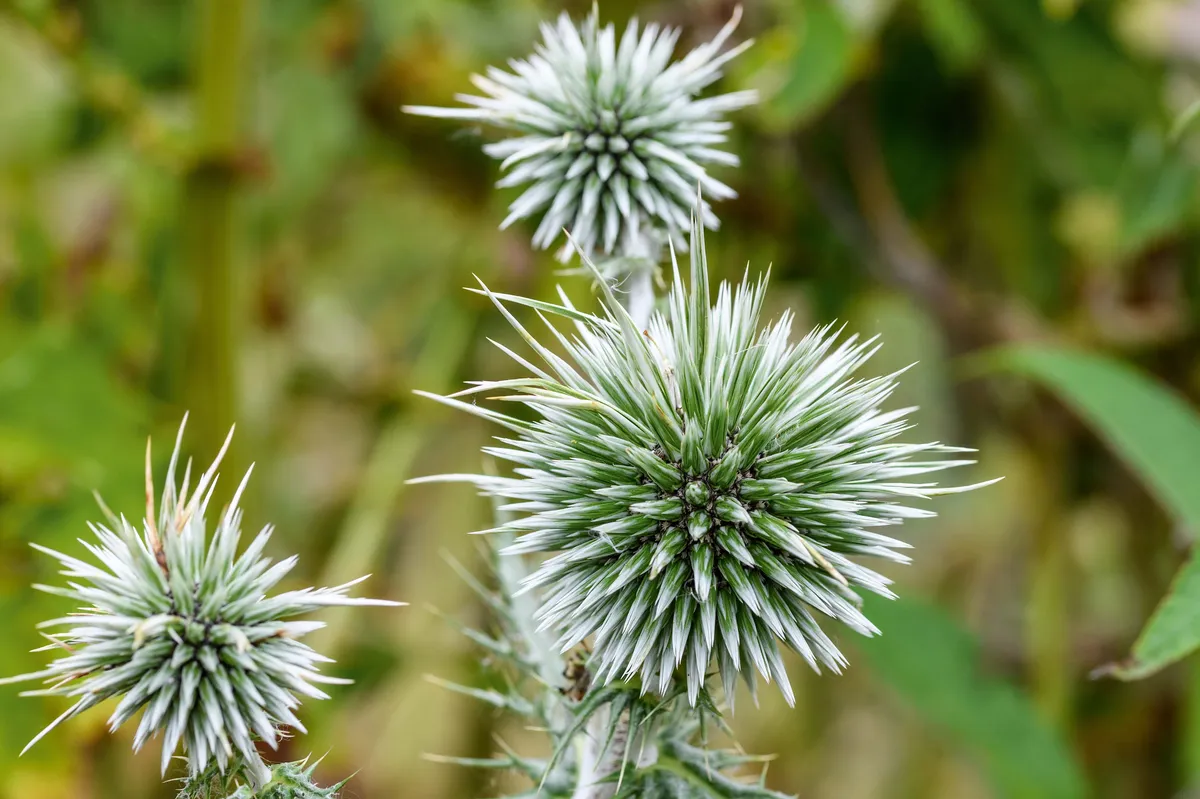
Originating from the eastern Mediterranean, Middle East and North Africa, this species has incredibly spiny foliage that is only surpassed by its spine-covered flowers. Rarely sets fertile seed. 80cm.
Echinops gmelinii ‘Snow King’
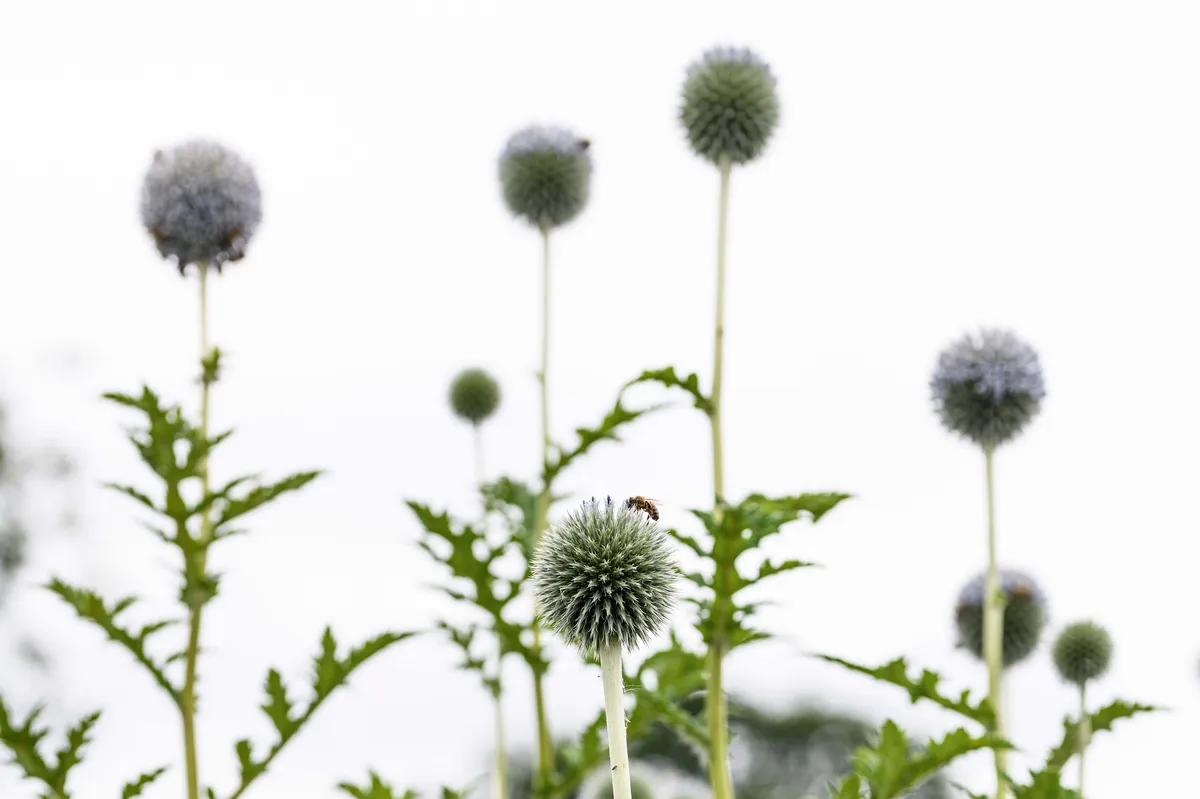
A white-flowered, perennial cultivar that flowers profusely in midsummer. It is notably narrower in habit than other globe thistles so a good choice for planting in clumps where space is at a premium. 1m-1.5m. USDA 3a-8b.
Echinops bannaticus ‘Blue Pearl’

An old and rarely offered cultivar that has the palest powder-blue flowers within the species, but performs almost identically to other Echinops bannaticus cultivars, flowering from midsummer to autumn. 1-1.5m. RHS H7, USDA 3a-8b.
*Holds an Award of Garden Merit from the Royal Horticultural Society. †Hardiness ratings given where available.
About the author
Dr Andrew Gladman is an entomologist and plant scientist who holds the National Plant Collection of Echinops.